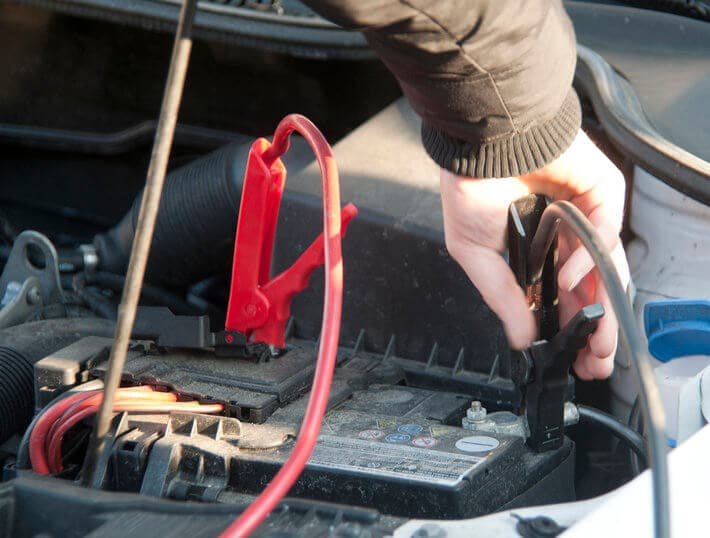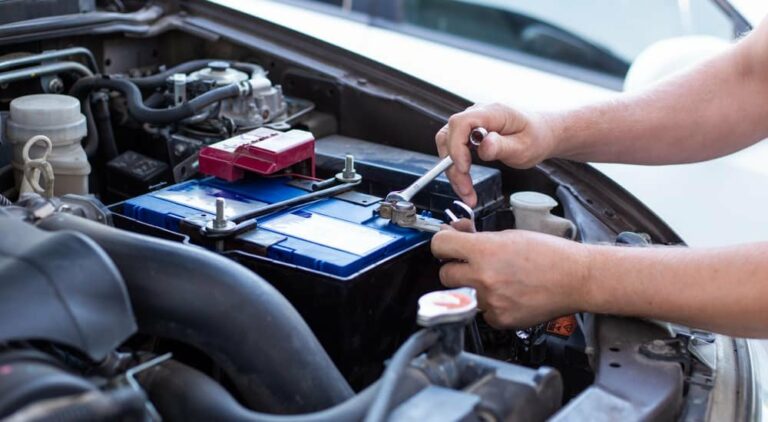How to Test a Car Battery’s State of Charge?
Today we discuss How to Test a Car Battery’s State of Charge. We’ve got you covered! Understanding the condition of your car battery is crucial for ensuring a reliable and smooth driving experience.
Luckily, checking the state of charge is a simple process that can be done at home with just a few tools. In this article, we will guide you through the steps to test your car battery’s state of charge, helping you troubleshoot any potential issues before they escalate. So, let’s dive right in and learn how to test a car battery’s state of charge!
How to Test a Car Battery’s State of Charge?
Testing the state of charge of your car battery is essential to ensure it is functioning properly and avoid unexpected breakdowns. A weak or discharged battery can leave you stranded and unable to start your car. In this article, we will guide you through the process of testing your car battery’s state of charge, helping you identify any potential issues and take the necessary steps for maintenance or replacement.
Understanding the Importance of Testing a Car Battery
Testing a car battery’s state of charge is crucial for several reasons. By checking the battery’s status, you can:
- Determine the overall health and capacity of the battery
- Identify potential issues or defects
- Avoid unexpected breakdowns
- Maximize the lifespan of the battery
- Ensure optimal performance of your vehicle’s electrical systems
Safety Precautions
Before you begin testing your car battery, it’s important to take the necessary safety precautions to avoid any accidents. Follow these guidelines:
- Ensure the engine is turned off and the key is removed from the ignition
- Wear protective gloves and safety goggles
- Keep away from open flames or sparks
- Avoid smoking in the vicinity
Tools Required
To test a car battery’s state of charge, you will need the following tools:
- A digital voltmeter or multimeter
- A battery load tester (optional but recommended)
- A battery charger (if the battery needs recharging)
- A wire brush or sandpaper (to clean battery terminals)
- A pair of safety gloves and goggles
Testing Method 1 – Using a Digital Voltmeter
A digital voltmeter is a handy and affordable tool for measuring the voltage of your car battery. Here’s how to use it:
- Open the hood of your car and locate the battery
- Clean the battery terminals using a wire brush or sandpaper to remove any corrosion
- Set your voltmeter to the DC voltage range
- Connect the meter’s positive (red) lead to the positive terminal of the battery
- Connect the meter’s negative (black) lead to the negative terminal of the battery
- Read the voltage displayed on the meter
A fully charged battery should read around 12.6 to 12.8 volts. If the reading is significantly lower, it indicates a discharged or weak battery that may require recharging or replacement.
Testing Method 2 – Battery Load Testing
While a voltmeter provides a basic measurement, a battery load tester offers a more comprehensive assessment of your battery’s condition. Follow these steps:
- Ensure the engine is turned off and all electrical accessories are off
- Connect the load tester’s positive (red) lead to the positive battery terminal
- Connect the load tester’s negative (black) lead to the negative battery terminal
- Activate the load tester and observe the results
- Read the voltage displayed on the tester
- Compare the reading with the manufacturer’s specifications or a battery load test chart
If the voltage drops below a specified threshold during the load test, it indicates a weak or faulty battery that needs replacing.
Interpreting the Results
Once you have conducted the battery tests, it’s important to interpret the results correctly. Here are a few scenarios and their implications:
- If the voltage reading is within the recommended range (12.6 to 12.8 volts), the battery is likely in good condition.
- If the voltage reading is significantly lower (below 12.4 volts), the battery may require recharging.
- If the voltage reading drops below a specified threshold during the load test, it indicates a weak or faulty battery that should be replaced.
Maintaining a Healthy Car Battery
To ensure your car battery remains in good condition, follow these maintenance tips:
- Regularly clean the battery terminals to prevent corrosion
- Ensure all electrical accessories are turned off when the engine is not running
- Avoid leaving your car unused for extended periods
- Keep the battery secured and free from vibrations
- Check the battery’s electrolyte levels if applicable
- Consider using a battery maintainer or trickle charger during long periods of inactivity
When to Seek Professional Help
While testing a car battery’s state of charge is relatively simple, some situations may require professional assistance:
- If you are unsure about performing the tests or interpreting the results
- If you repeatedly encounter battery-related issues
- If your car’s electrical systems are malfunctioning despite a healthy battery
- If you suspect a faulty charging system or alternator
What Voltage Should Car Battery Be?!
Frequently Asked Questions
How can I test the state of charge of my car battery?
To test the state of charge of your car battery, you can use a multimeter or a battery load tester. Start by turning off your vehicle and connecting the multimeter or load tester to the battery terminals. The multimeter will display the voltage, and a fully charged battery should read around 12.6 volts or higher. With a load tester, you can check the battery’s ability to hold a charge under a simulated load. A healthy battery should maintain a voltage above 9.6 volts during the test.
What does it mean if my car battery’s state of charge is low?
If your car battery’s state of charge is low, it indicates that the battery is not holding enough energy to start your vehicle reliably. This could be due to a variety of reasons, such as leaving the headlights or interior lights on for an extended period without the engine running, a faulty charging system, or an aging battery that needs replacement. It is recommended to recharge the battery or have it tested and replaced if necessary.
Can I test the state of charge of my car battery without any special tools?
While using a multimeter or battery load tester is the most accurate way to test the state of charge, you can also get a rough estimate without any special tools. Start your car and let it run for a few minutes to charge the battery. Then, turn off the engine and try starting it again. If the engine cranks slowly or struggles to start, it is an indication that your battery may have a low state of charge and needs attention.
How often should I test the state of charge of my car battery?
It is recommended to test the state of charge of your car battery regularly, especially if you notice any signs of a weak battery, such as slow cranking or dim headlights. Additionally, testing the battery before extreme weather conditions, such as winter, can help avoid unexpected battery failure. As a general guideline, testing the state of charge every three to six months is a good practice to ensure the optimal performance of your battery.
Can a faulty alternator affect the state of charge of my car battery?
Yes, a faulty alternator can significantly affect the state of charge of your car battery. The alternator is responsible for charging the battery while the engine is running. If the alternator is not functioning properly, it may not provide sufficient charge to the battery, leading to a low state of charge. If you suspect a faulty alternator, it is recommended to have it inspected and repaired by a qualified mechanic to prevent further battery issues.
What should I do if my car battery’s state of charge is consistently low?
If your car battery’s state of charge is consistently low, it may be an indication of an underlying issue. Start by checking for any electrical components or lights that may be draining the battery when the car is off. If there are no apparent issues, it is advisable to have your battery and charging system inspected by a professional. They can diagnose the problem and provide the necessary repairs or battery replacement if needed.
Final Thoughts
Testing the state of charge of a car battery is an essential task for ensuring optimal performance and avoiding unexpected breakdowns. By following a few simple steps, it is possible to accurately assess the battery’s condition. From using a digital multimeter to inspecting the battery’s physical appearance, there are various methods available. Additionally, paying attention to warning signs such as slow engine cranking or dim headlights can indicate a low state of charge. Regularly testing a car battery’s state of charge helps to identify potential issues early on, allowing for timely maintenance and preventing inconvenient breakdowns on the road.




